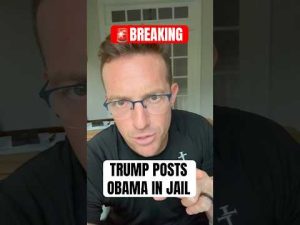**Tariffs, Inflation, and the Future of American Jobs: A Conservative Perspective**
In the ever-evolving world of economics, it seems that the talk of tariffs has taken center stage once again. Justin Haskins, the president of Our Republic and editor-in-chief of stopping socialism.com, recently found himself amidst a heated discussion regarding the impact of tariffs on inflation. Interestingly, he suggested that the conventional wisdom surrounding tariffs and their supposed inflationary effects may not paint the full picture. This revelation, especially coming from someone with a reputation for calling out economic forecasts, has sparked curiosity and debate among experts and everyday citizens alike.
The latest data on inflation has sent shockwaves through the economic community. According to reports, inflation rates increased modestly, with June seeing a 2.7% rise compared to the previous year. Many were quick to blame tariffs for this increase, but Haskins made the case that these figures might not be as alarming as they seem. After diving into the details, he discovered that prices in June were actually lower than they were during the winter months before the tariffs were enacted. This revelation raises eyebrows and leads one to ponder whether the narrative surrounding tariffs truly holds water.
Haskins delved deeper into specific categories within the consumer price index (CPI), pointing out that industries heavily reliant on imported goods—like clothing and vehicles—aren’t seeing the expected price hikes. In fact, prices for clothing are reportedly going down, while new vehicle prices remain steady despite significant tariffs. This observation poses an intriguing question: if businesses are feeling the pinch from tariffs, why aren’t they passing those costs onto American consumers? According to Haskins, it seems the businesses might be playing a strategic game, perhaps hoping to wait out the tariffs instead of raising prices now.
Shifting gears, the discussion also touched on a surprising twist—the recent appearance of a budget surplus in the U.S. for the first time in over 20 years. The very notion of a surplus has almost become a fairy tale among many political commentators. However, it was indeed reported, suggesting that the administration’s strategy might be slowly bearing fruit. Haskins brought a glimmer of hope, asserting that if American manufacturers can enhance their efficiencies through artificial intelligence and automation, there could be a genuine path to competitiveness in the global market.
Yet, with all these advancements and shifts, there’s still a lurking question: what will become of traditional jobs? The fear of AI taking over roles traditionally held by humans creates a significant concern for both conservatives and liberals. Haskins argued that while technology can disrupt current job markets, it may also foster new opportunities. The true challenge lies in how well society can adapt to these changes. With Democrats potentially using the rise of AI as an opportunity to push for government assistance programs, the narrative surrounding job security in the age of automation becomes a battleground for both parties.
In the final analysis, the economic landscape is undoubtedly shifting. The predictions about tariffs, inflation, and AI’s role in the workforce are interconnected threads in a complex tapestry. While some see doom and gloom, others, like Haskins, offer a more optimistic outlook on America’s ability to navigate these challenges. The future remains uncertain, but one thing is for sure: the conversations around tariffs, inflation, and technological advancement are just beginning, and they could shape the political dialogue in profound ways in the years to come.







